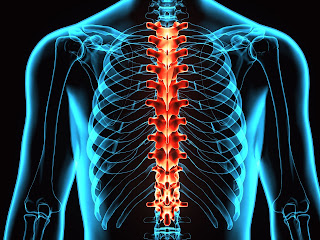What is Scoliosis?
Scoliosis is a sideways curve in the spine (backbone) which is often diagnosed in adolescent age. It can occur in people with conditions such as Cerebral Palsy and Muscular Dystrophy, most often there is no known cause for this condition. In most of the cases scoliosis are mild but some curves grow severe as children grow. Doctors may use the alphabets "C" and "S" to describe the curve.
What are the signs and symptoms of Scoliosis?
- Visible curve in the back
- Shoulders, hips or waist that looks uneven
- One side of the rib cage extending forward
- Uneven shoulder blades
Other symptoms related to this can be:
- Back Stiffness
- Lower back pain
- Fatigue due to muscle strain
- Pain and numbness in legs due to pinched nerve
What can be the causes for Scoliosis?
Well, main cause is unknown but some hereditary factors may be involved. Less common types of Scoliosis may be caused by –
- Previous surgery on the chest wall as a baby
- Spinal cord abnormalities
- Injuries or infections of the spine
- Birth defects affecting spinal development
Types of Scoliosis
- 1) Idiopathic Scoliosis
- 2) Congenital Scoliosis
- 3) Neuromuscular Scoliosis
What are the Treatment options for Scoliosis?
- Observation - Somewhere about 90% of idiopathic scoliosis cases are mild and can be kept under observation until the person has reached full skeletal maturity.
- Braces – If the child’s bones are still developing and has moderate scoliosis, the doctor may recommend brace. Wearing a brace won't cure scoliosis or reverse the curve, but it prevents the curve from getting more severe. Most braces are worn between 13-16 hours a day depending upon its severity.
- Surgery - Severe scoliosis typically progresses with time, so a scoliosis surgery may be required to help straighten the curve and prevent it from getting worse.
Surgical options include:
- Spinal fusion – In this surgery, 2 or more vertebrae (bones in the spine) are fused together so that they can’t move independently. An advantage to spinal fusion surgery is that it has a long-term safety and efficacy for treating scoliosis. Today’s modern methods tend to fuse fewer vertebrae and maintain more mobility than in past.
- Expanding rod - If the scoliosis is growing rapidly at a young age, surgeons can attach one or two expandable rods along the spine so that it can adjust in length as the child grows. The rods are lengthened every 3 to 6 months either with surgery.
- Vertebral body tethering - It involves placing screws on the outer side of the curve and then pulling them firmly with a cord so the spine straightens. Compared to spinal fusion, fusionless surgery has the possible benefit of retaining more spinal mobility. However, this is a newer approach and long-term data about the risks and benefits are not yet known.
To know more about Spine Surgeries in India - Click Here
To know more about Spinal Cord Injury Treatment in India - Click Here
To know more about non-surgical back pain treatment in India - Click Here



.jpg)
Comments
Post a Comment